However, there is a very special, simple yet surprising way to plant roses that very few people know about: Planting roses with potatoes.
It may sound unbelievable, but this planting method is easy even for novice gardeners and cost-effective. If you follow the steps correctly and are patient, you will soon witness a well-developed rose bush with vibrant blooming flowers. Tintuconline invites you to refer to the following steps:
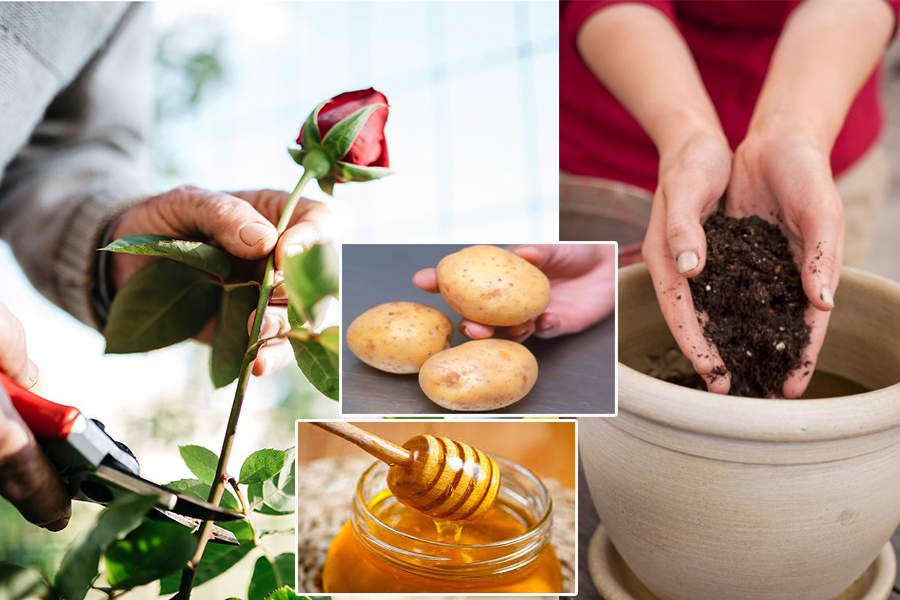
Essential components to prepare
PREPARATION:
– A rose branch or a healthy and fresh rose with a length of about 20cm
– A jar of honey
– A large-sized potato
– A nutrient-rich potting soil
– A pair of scissors
– A small spade for digging
Illustrating the process
IMPLEMENTATION:
Step 1: Dip the stem of the rose branch into the jar of honey.
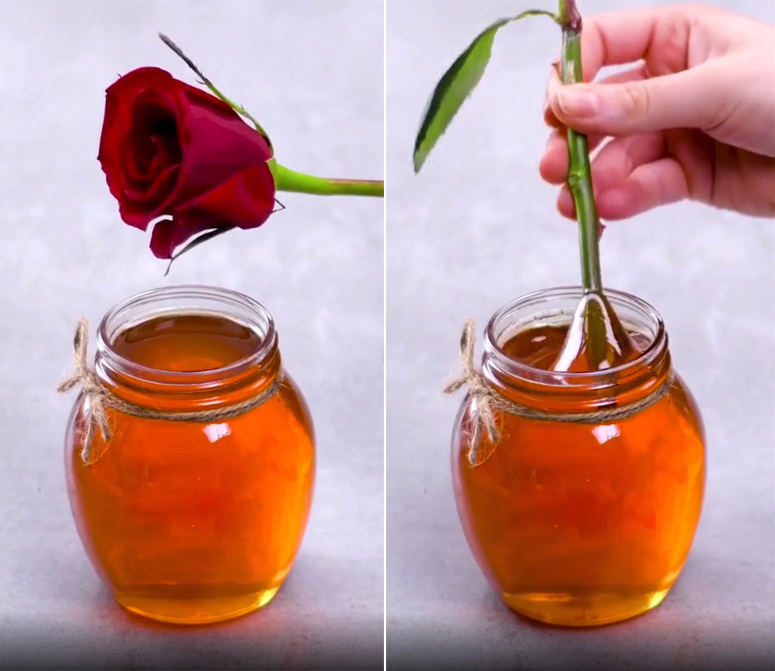
Honey contains organic substances as well as antimicrobial properties. Soaking the rose branch in honey helps prevent harmful bacteria and fungi from developing during the rooting process.
Step 2: Insert the honey-dipped rose stem deep into the potato.
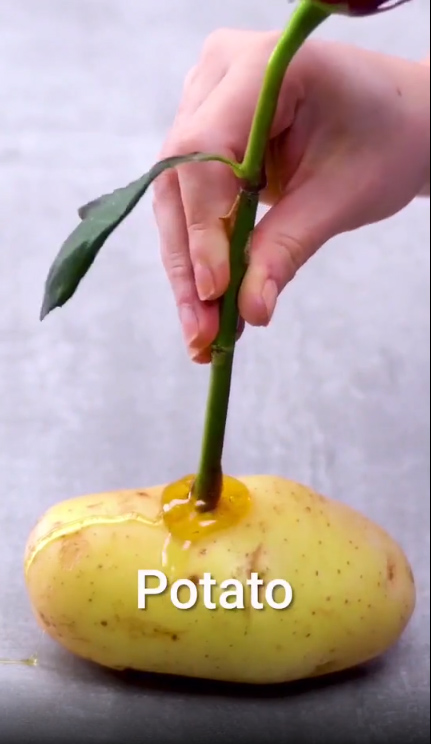
Potatoes provide sufficient nutrients, moisture, minerals, and especially hormones that stimulate rose branches to develop roots and supply sufficient nutrients for the growth of the flower bud.
As the potato decays, it becomes an excellent fertilizer for the rose bush to thrive and bloom.
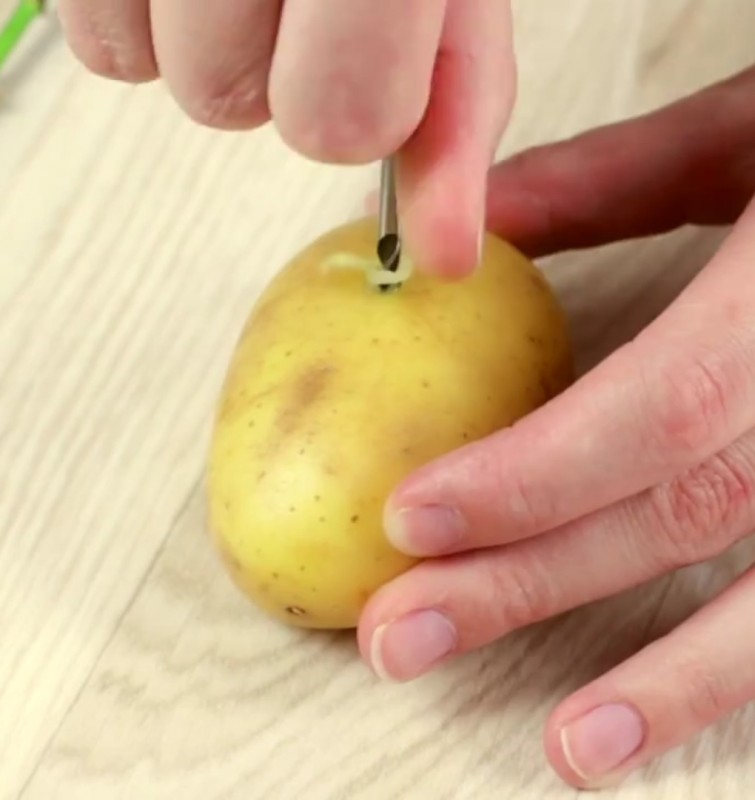
Note: You can use a tool to create a hole with a size similar to the size of the rose branch on the potato beforehand to make it easier to insert the rose branch without causing any damage. Additionally, it is recommended to use scissors or a sharp knife to remove all the sprout eyes on the potato before inserting the branch to avoid it growing into a separate tree.
Step 3: Transfer the potato with the inserted rose branch into the potting soil and plant it.
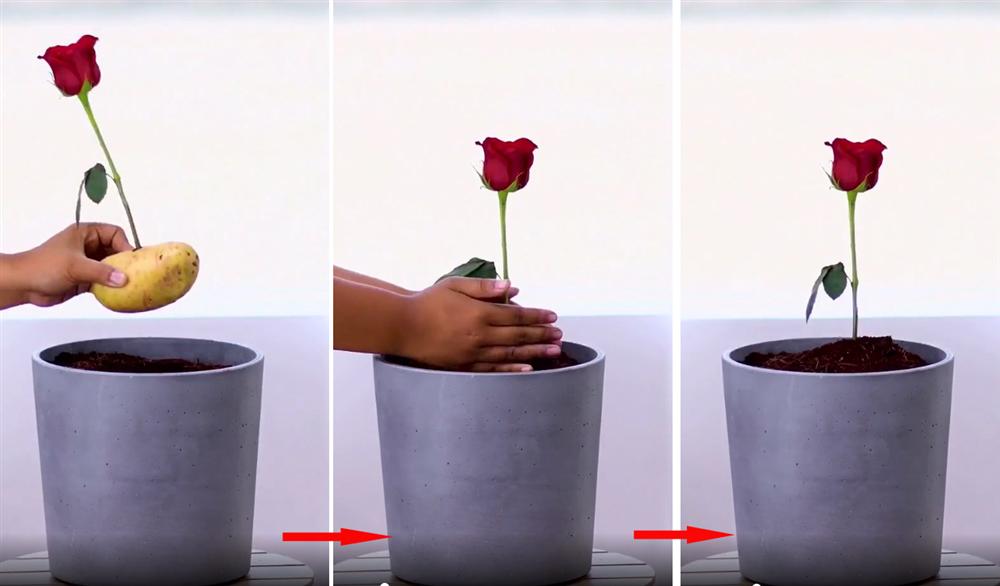
Prior to this, loosen the soil and add water to ensure it is sufficiently moist. Dig a hole in the pot that is just big enough to accommodate the potato. Then, make sure to cover the potato with soil, leaving at least the part of the stem in contact with the potato exposed.
Step 4: Use scissors to cut the rose branch diagonally at a 45-degree angle (keep the bottom part, remove the flower). Then, trim off all the leaves and thorns on the rose branch.
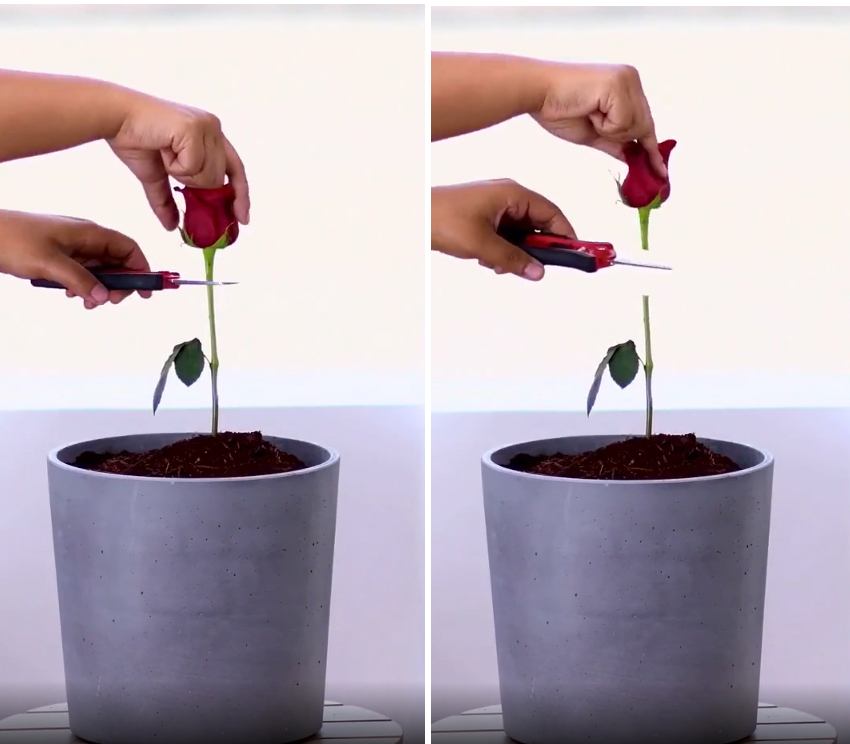
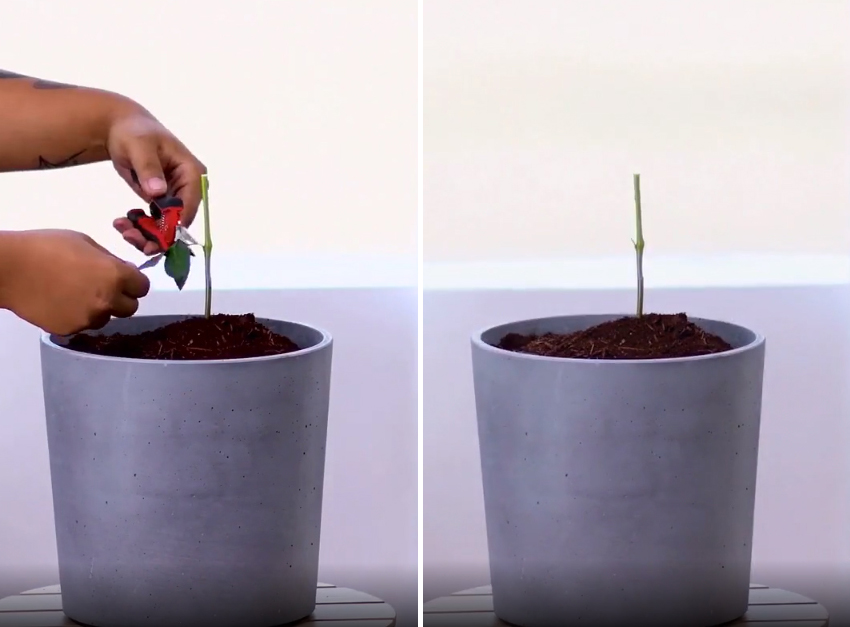
Step 5: Take care of the rose bush and wait for the results.
During the initial days, place the pot with the rose bush in a shady area. The substances in the honey and potato will stimulate the rose branch to grow roots.
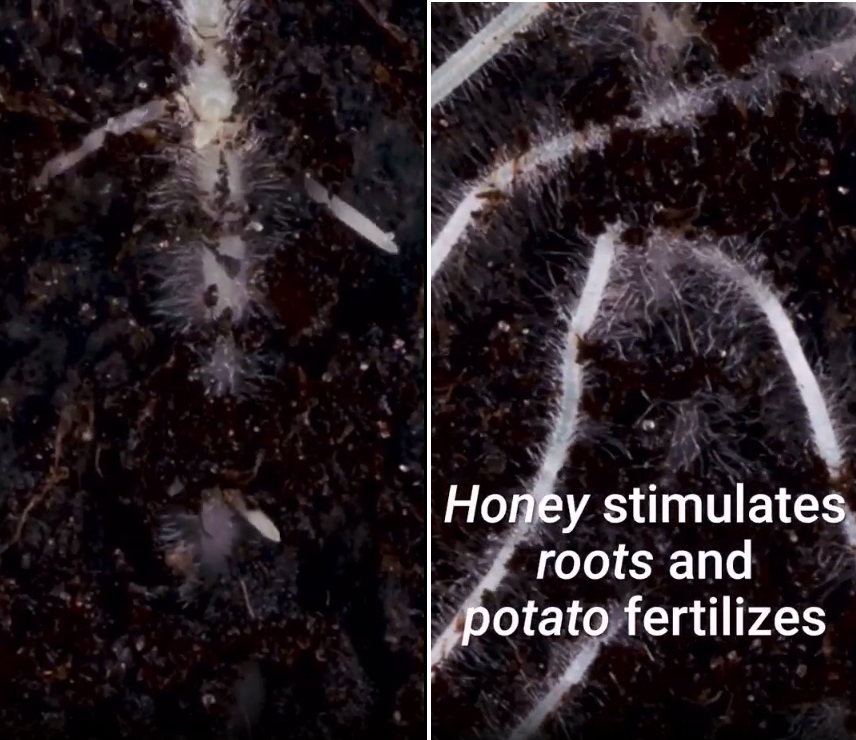
After about a week, when more growth is visible and the rose bush feels sturdier, it can be moved to a slightly sunnier location, as long as direct sunlight is avoided.
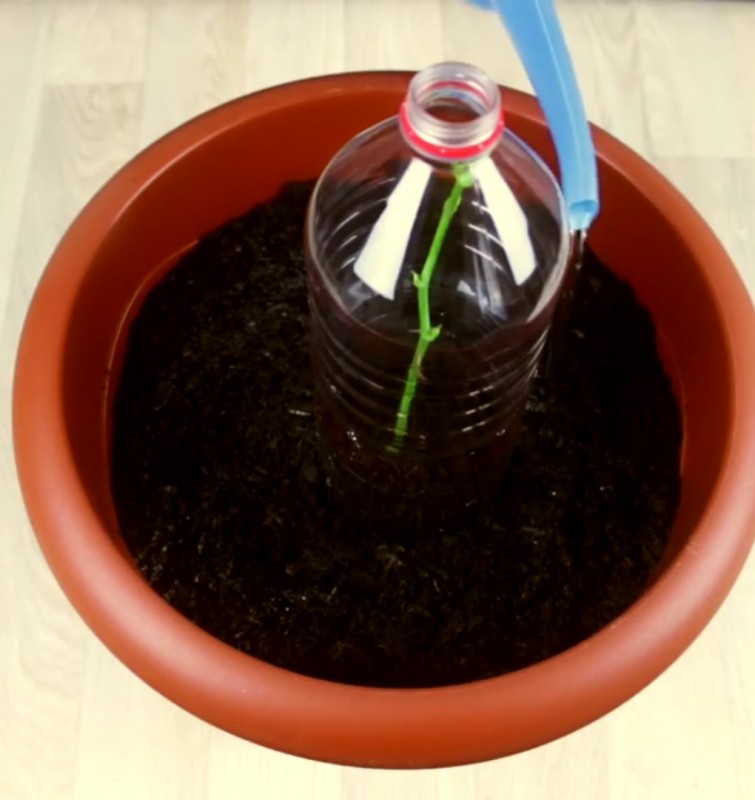
Alternatively, you can use a suitable plastic bottle, remove the neck part, and cap it over the rose branch. This method is similar to creating a mini greenhouse that stabilizes the temperature and provides moisture to the rose branch.
On a daily basis, keep the soil sufficiently moist to ensure optimal growth.
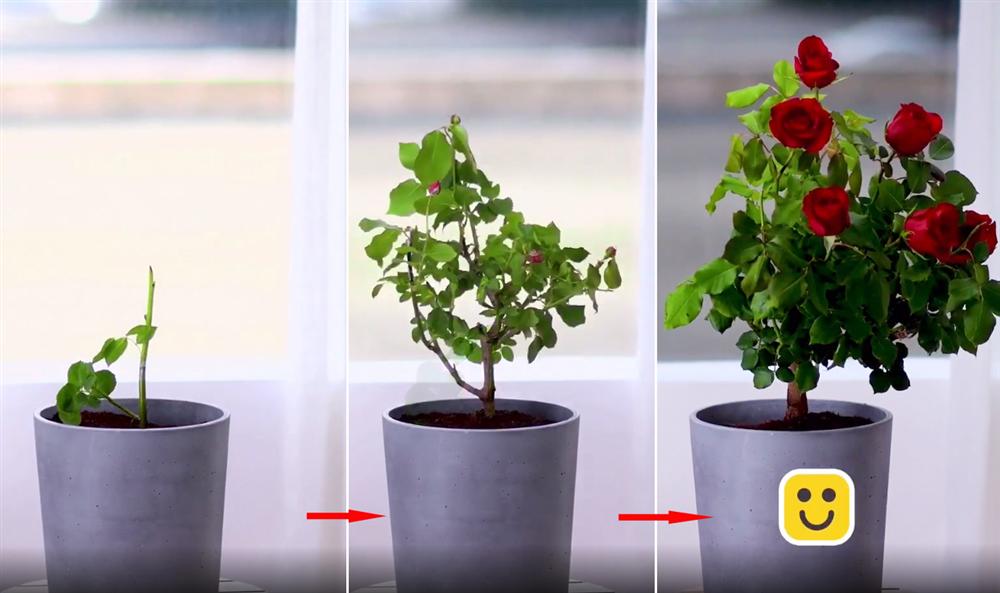
With persistence and dedication, one day you will soon see this rose bush flourishing, blooming, and producing beautiful, vibrant flowers. That feeling will be incredibly rewarding.
Wishing you success!
(Reference: Blossom)
By Vân Khánh – VietNamNet






























